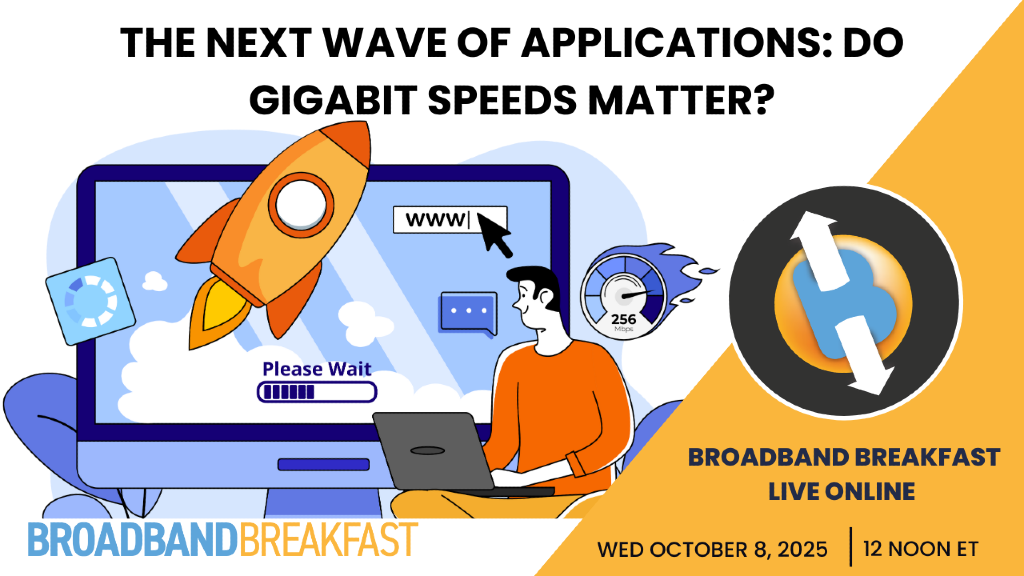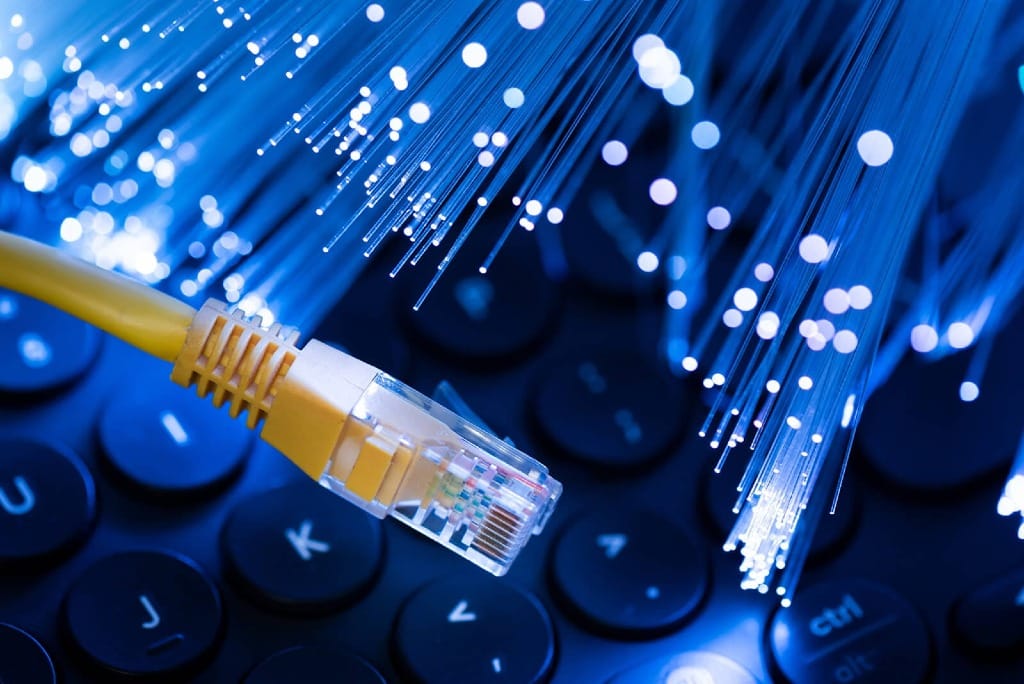WASHINGTON, Oct. 10, 2025 — As fiber broadband deployment reaches record levels across the United States, industry experts discussed Wednesday whether consumers truly need gigabit internet speeds or if current infrastructure already exceeds everyday requirements.
During a Broadband Breakfast Live Online panel discussion, four telecommunications specialists presented diverging views on the urgency of ultra-high-speed connectivity, even as deployment statistics show rapid expansion of gigabit-capable networks.
Bob Whitman, Vice President of Market and Product Strategy at Corning Optical Communications, cited significant progress in fiber deployment. “Today, more than half the country, close to 80 million homes have a fiber provider in those communities,” Whitman said. “About 15% of homes that have a fiber provider have a second fiber provider in their community.”
Broadband Breakfast on October 8, 2025 – The Next Wave of Applications: Do Gigabit Speeds Matter?
How important are gigabit speeds to transforming America’s digital economy?

However, William Lehr, a Research Affiliate at MIT who studies internet economics, questioned the immediate consumer need for such speeds. “Today few consumers really need gigabit speeds, and even when it’s available most of them don’t want to buy it,” Lehr said. He noted that he doesn’t subscribe to gigabit service from his municipal fiber provider because “there isn’t anything that I do today that would notice a difference.”
Jimmy Schaeffler, Chairman and CSO of the Carmel Group, argued for a more nuanced approach to broadband deployment. “Every audience member or their organization needs to develop and use a formula or a methodology to determine appropriate broadband solutions,” Schaeffler said, suggesting hybrid networks combining fiber and wireless technologies may offer optimal value for many users.
Glenn Ricart, Founder and CTO of US Ignite, presented data showing average download speeds already exceed half a gigabit, with more than half of internet users now having gigabit connections. But Ricart looked beyond current needs to future applications.
“I think the killer apps are going to be in the areas of continuous medical monitoring,” Ricart said. “I think that there’s going to be a lot of work on making education not a school-only place.”
Ricart also discussed terabit applications, noting that scientific networks like the Vera Rubin Observatory in Peru now utilize 6.71 terabits per second connections. He predicted such speeds enable “faster than human decision-making, true real-time interaction, distributed competitions and performances, virtual teleportation, vehicle-to-vehicle coordination, and remote surgery.”
The panel also addressed concerns about prioritizing rural broadband deployment. Lehr defended recent policy shifts away from fiber-only requirements, calling the movement toward “more flexible usage of the funds and more encompassing view of the technologies” a positive development.
Schaeffler invoked political structure as protection for rural interests. “Our founding fathers built a system legislatively called the Senate, and the Senate gave two senators to every state,” he said. “As long as there is still a system of two senators for every state, I would say rural America will be well represented.”
The discussion highlighted ongoing tensions between maximizing network capabilities and managing deployment costs as the industry deploys more than 10 million fiber connections annually over the next several years.


